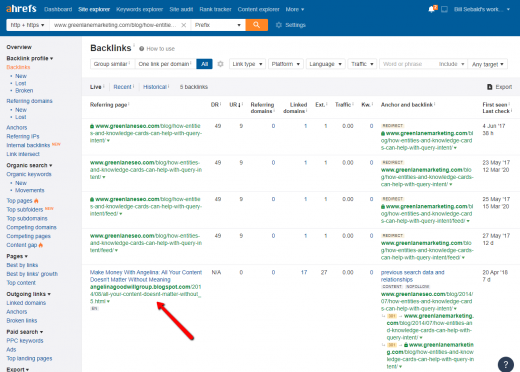Using Google Search Console Tools to Clean Up Your (404) Act
This article is an entire rewrite from its original 2012 version. When Google launched the new Search Console (thus killing the legacy 404 report), it rendered the old version of this post useless.
The bad news – the new URL inspector doesn’t work the same as the legacy report. In the previous report, you could look at 404 URLs and see what pages are linking to them, both internally and externally. The external URLs could be really great websites! So, the previous article explained how to easily find good links that are severed because of your 404’s.
The rewrite of the article (the one you are reading now) also will help you identify the link opportunities, but thanks Google, you did take the ease out of it. Well, let’s stop dwelling in the past and get to the topic.
The Coverage Report
The Coverage report (on the left side under “index”) is a multi-purpose report. If you click the Error block (in red below), you’ll get a list of errors that Google has encountered. In this case, there are redirect errors that lead to 404’s. But you will likely see some other similar errors as well.
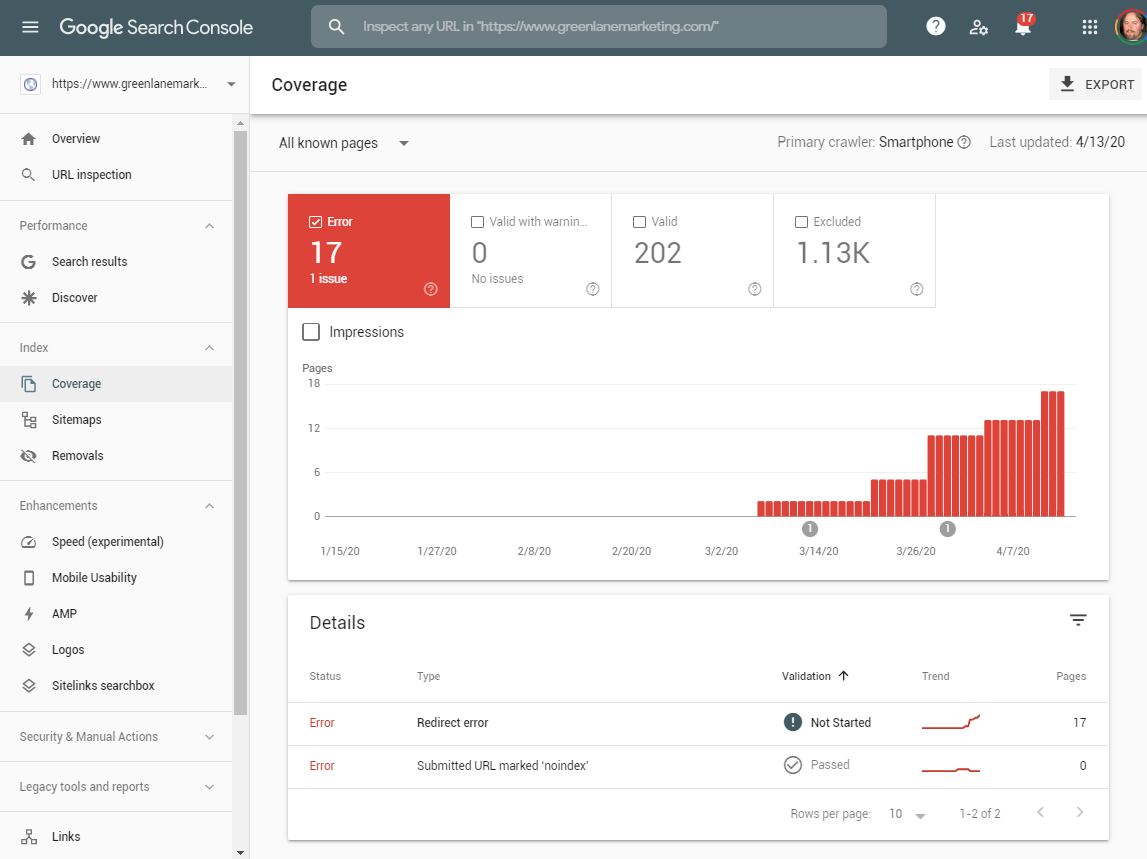
Click the error you want to dig into. You’ll get a list:
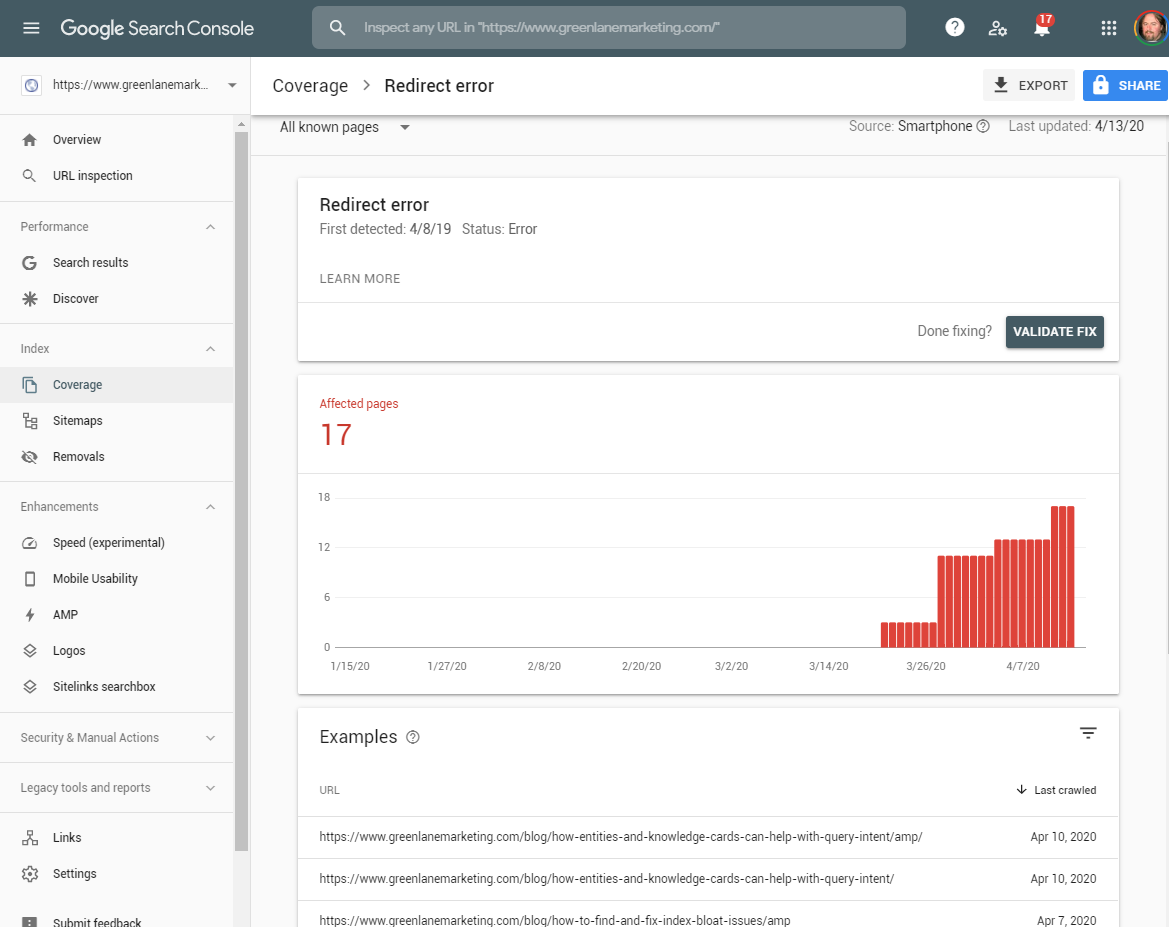
Be prepared to work through each URL. If you have many, grab a beer.
After clicking the link you want to review, click: ![]()
You will then see a new individual URL report:
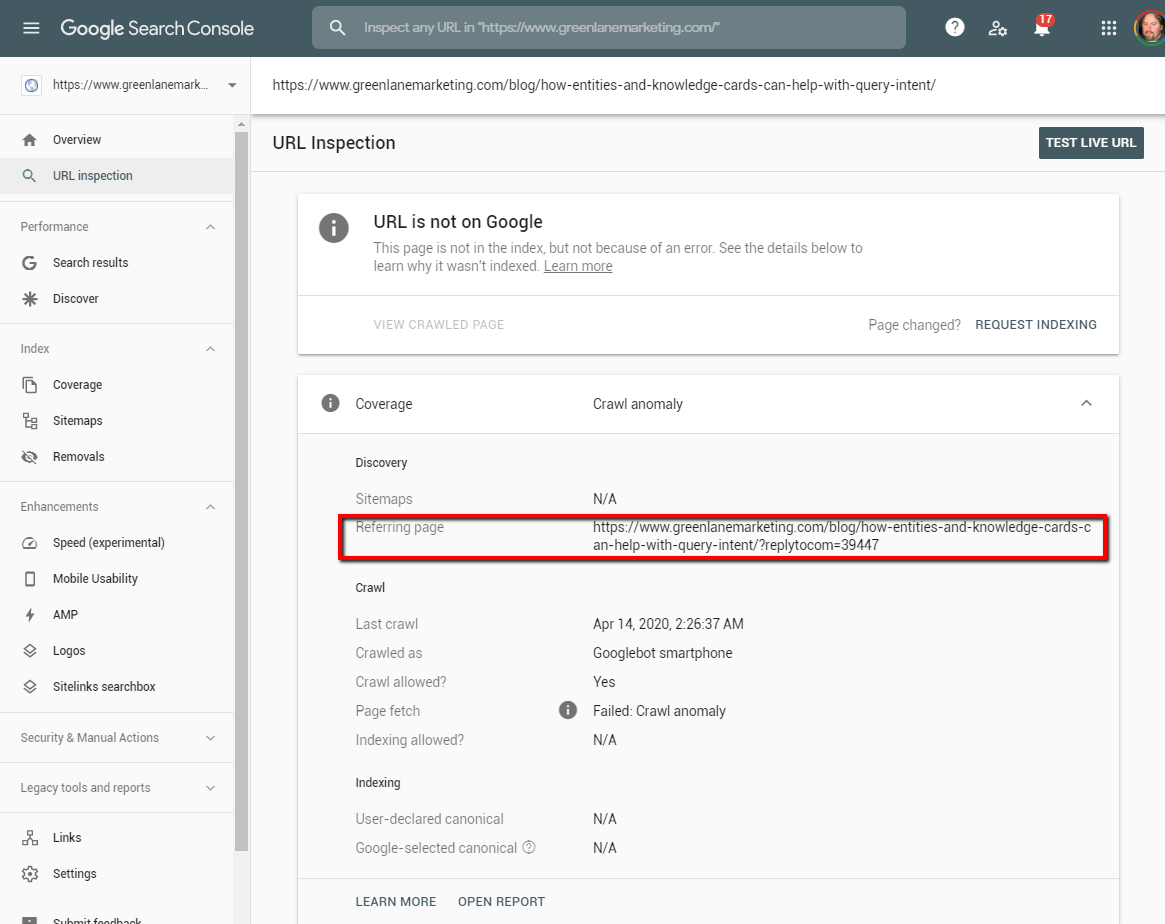
The area I highlighted is an example of the page Google followed to find the error. This is quite unimpressive compared to the legacy Search Console report that listed many URLs. In the legacy tool, you might see a link from a good website that you’d want to reconnect (with a redirect). That would help you build a priority list.
However, now you’ll have to rely on a third-party tool like Majestic, Ahrefs, Moz, or wherever you get your backlink data. At Greenlane, we use Ahrefs:
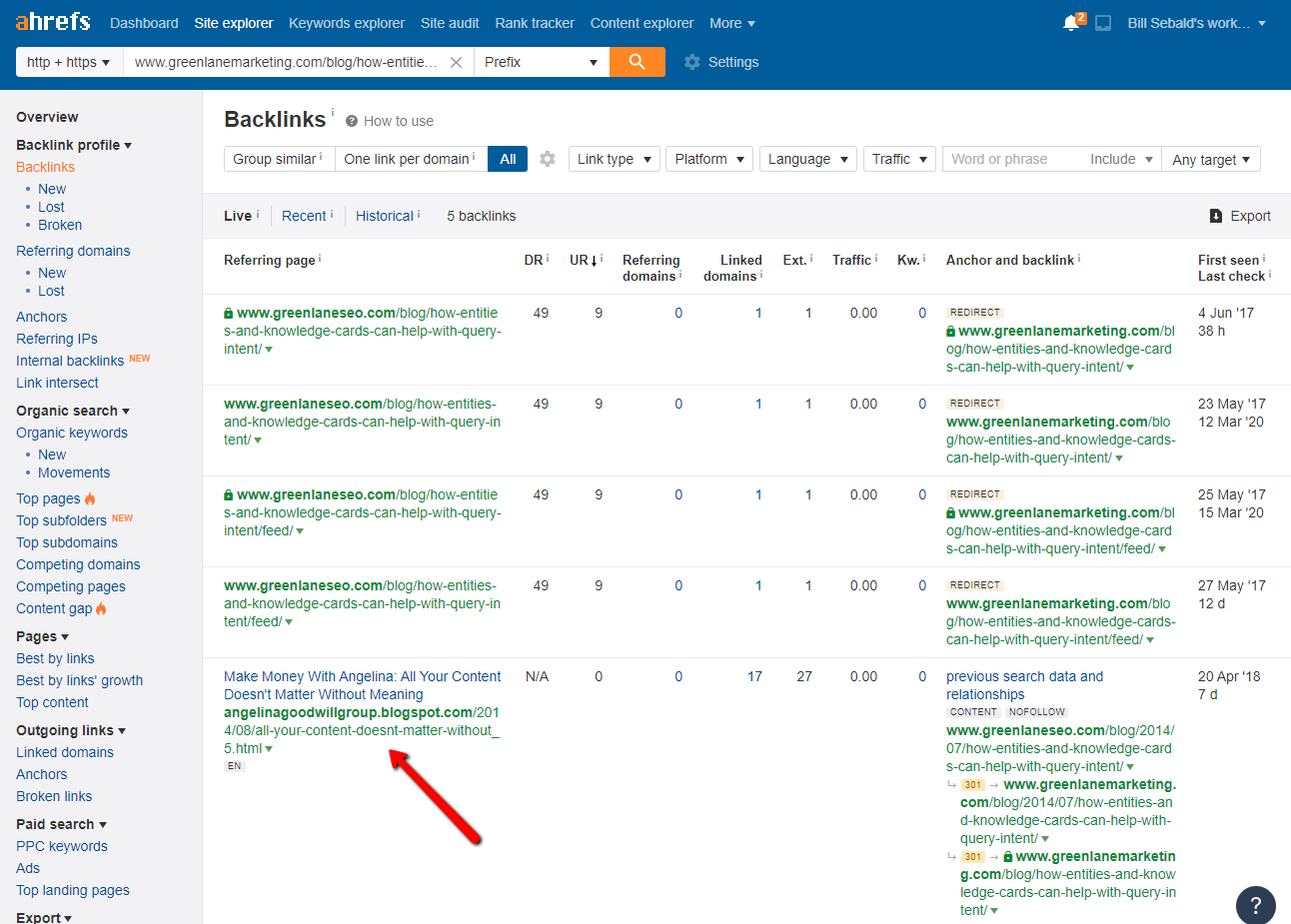
In looking at this report, I see a few internal links that will be restored by properly redirecting my erroneous URL. But I also see a link from a Blogspot post. It is a lower quality, nofollowed, unauthorized republish of my post. With this information, I would prioritize this one lower on my list of redirects.
Repeat these steps for each URL you need to review.
Conclusion
Yes, this is a manual process. It may be sped up through APIs in the future (at this time I don’t believe the Ahrefs API can pull actual URLs like they display in tool). Try splitting it up with several team members. It’s a great task for entry-level or interns as well.
I try to do this exercise once a month on large sites and once a quarter on small sites. If you have hundreds or thousands of 404s, you’ll quickly see why I suggest a process of prioritization. It’s a bit like pulling weeds in your yard. You’ll have that one day when you get the bulk of the weeds. Then you just need to do it once in a while for maintenance. But if you want a healthy website (and lawn), it’s a task you simply shouldn’t avoid.
Digital & Social Articles on Business 2 Community
(37)

